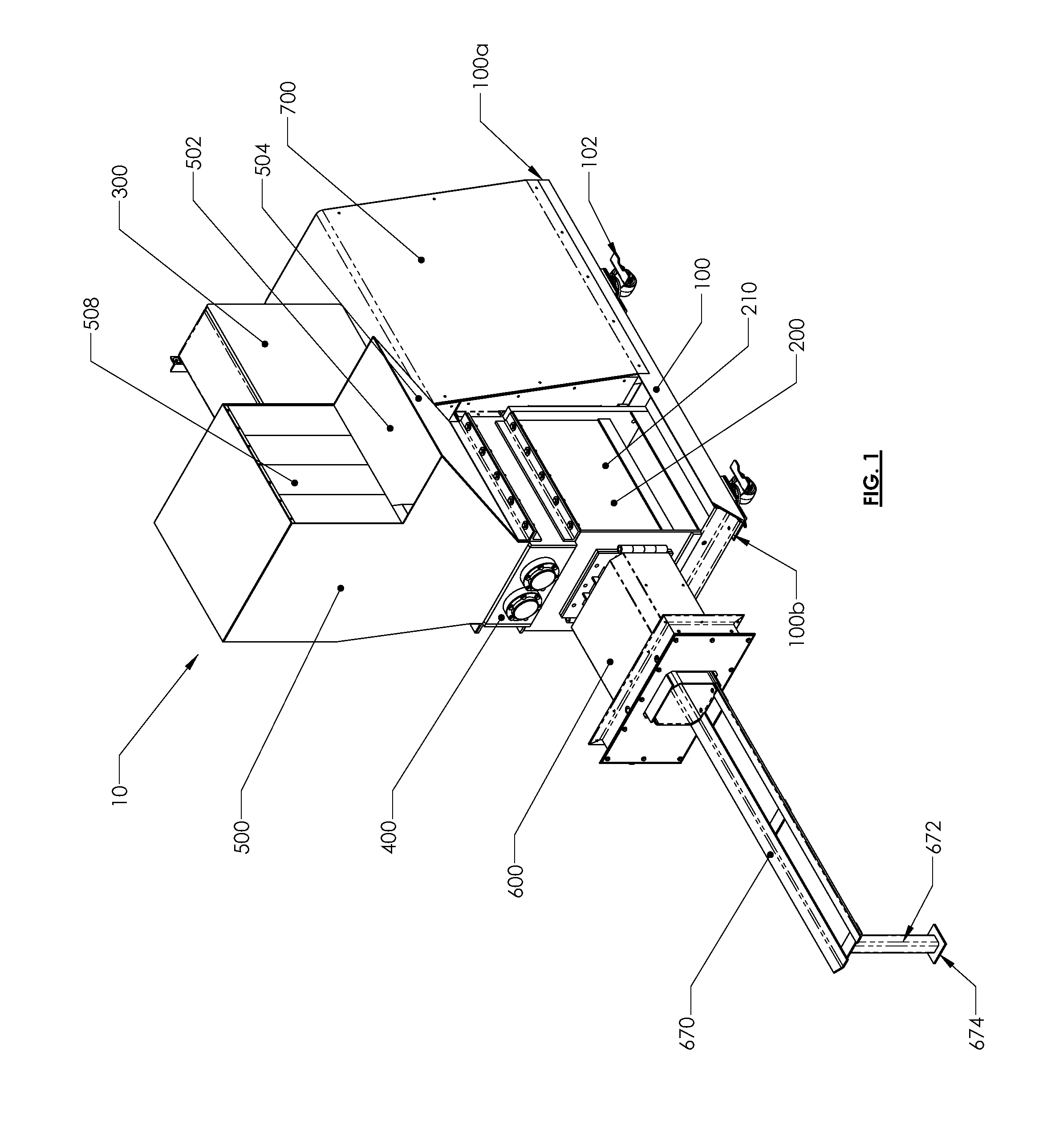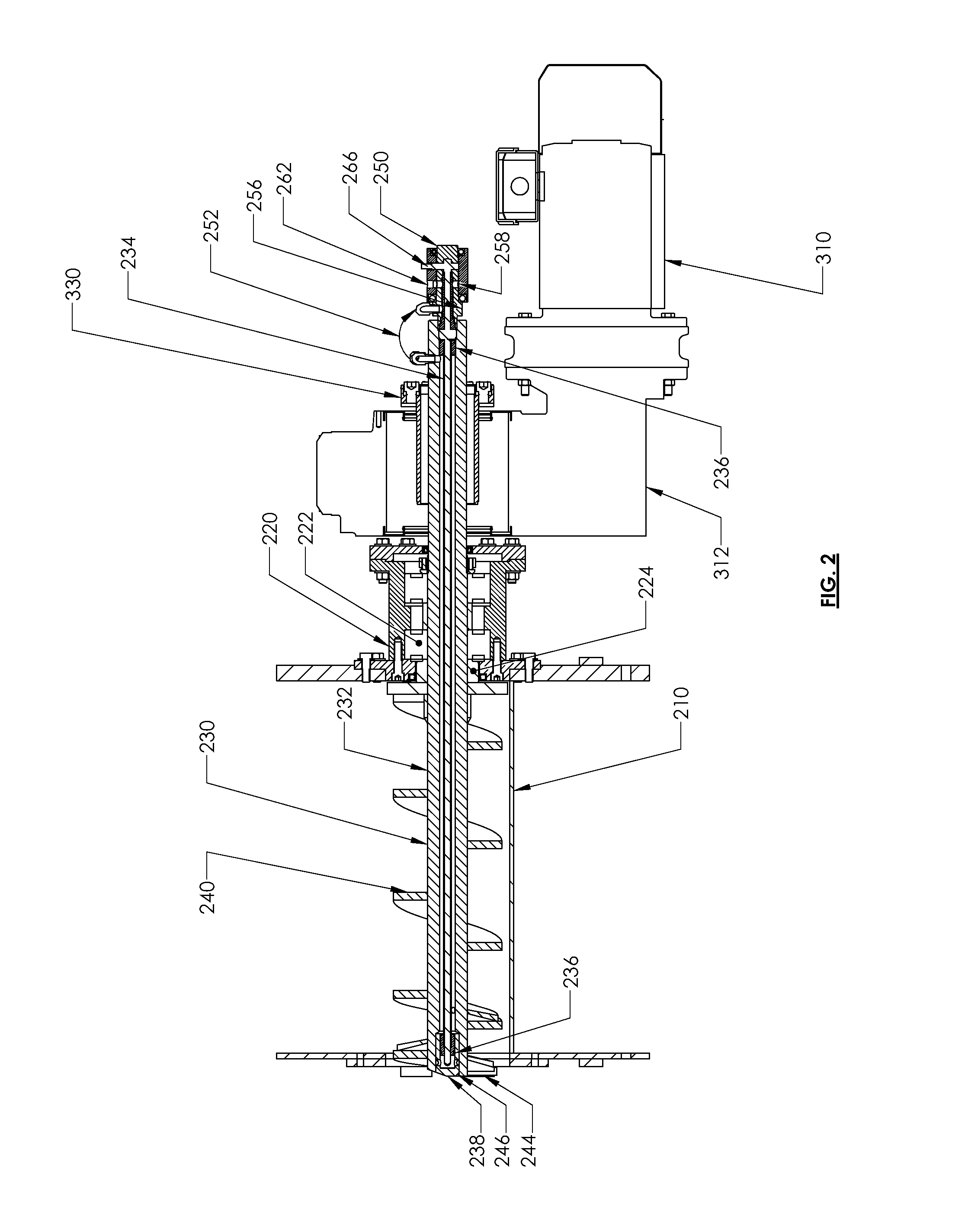System and method for adjusting and cooling a densifier
a densifier and cooling technology, applied in the field of densifiers, can solve the problems of many plastics taking a very long time to biodegrade, eps, and certain types of lightweight plastics, and achieve the effects of increasing the volume output, increasing the density of the output log or bale, and increasing the speed of the screw
- Summary
- Abstract
- Description
- Claims
- Application Information
AI Technical Summary
Benefits of technology
Problems solved by technology
Method used
Image
Examples
Embodiment Construction
)
[0080]As seen in FIG. 1, exemplary embodiments of a densifier 10 that may be adapted to densify plastics or other materials are illustrated. Exemplary embodiments may include a frame 100 with a proximal end 100a and a distal end 100b such that rolling wheels 102 are attached to the frame 100. In other exemplary embodiments, the frame 100 may be adapted to mount or sit on different surfaces without the inclusion of wheels.
[0081]Exemplary embodiments of the densifier 10 may include a compactor module 200 that is mounted to the frame 100, as seen in FIGS. 2 and 3A. The compactor module 200 includes a grinding chamber 210 that surrounds a compression screw 230 and other components. The walls of the grinding chamber 210 may be fabricated from materials that are strong enough to withstand the force exerted by the materials that are densified by the compression screw 230 during use of the densifier 10. One example of the grinding chamber 210 may be cuboid in geometry, with at least one op...
PUM
 Login to View More
Login to View More Abstract
Description
Claims
Application Information
 Login to View More
Login to View More - R&D
- Intellectual Property
- Life Sciences
- Materials
- Tech Scout
- Unparalleled Data Quality
- Higher Quality Content
- 60% Fewer Hallucinations
Browse by: Latest US Patents, China's latest patents, Technical Efficacy Thesaurus, Application Domain, Technology Topic, Popular Technical Reports.
© 2025 PatSnap. All rights reserved.Legal|Privacy policy|Modern Slavery Act Transparency Statement|Sitemap|About US| Contact US: help@patsnap.com



